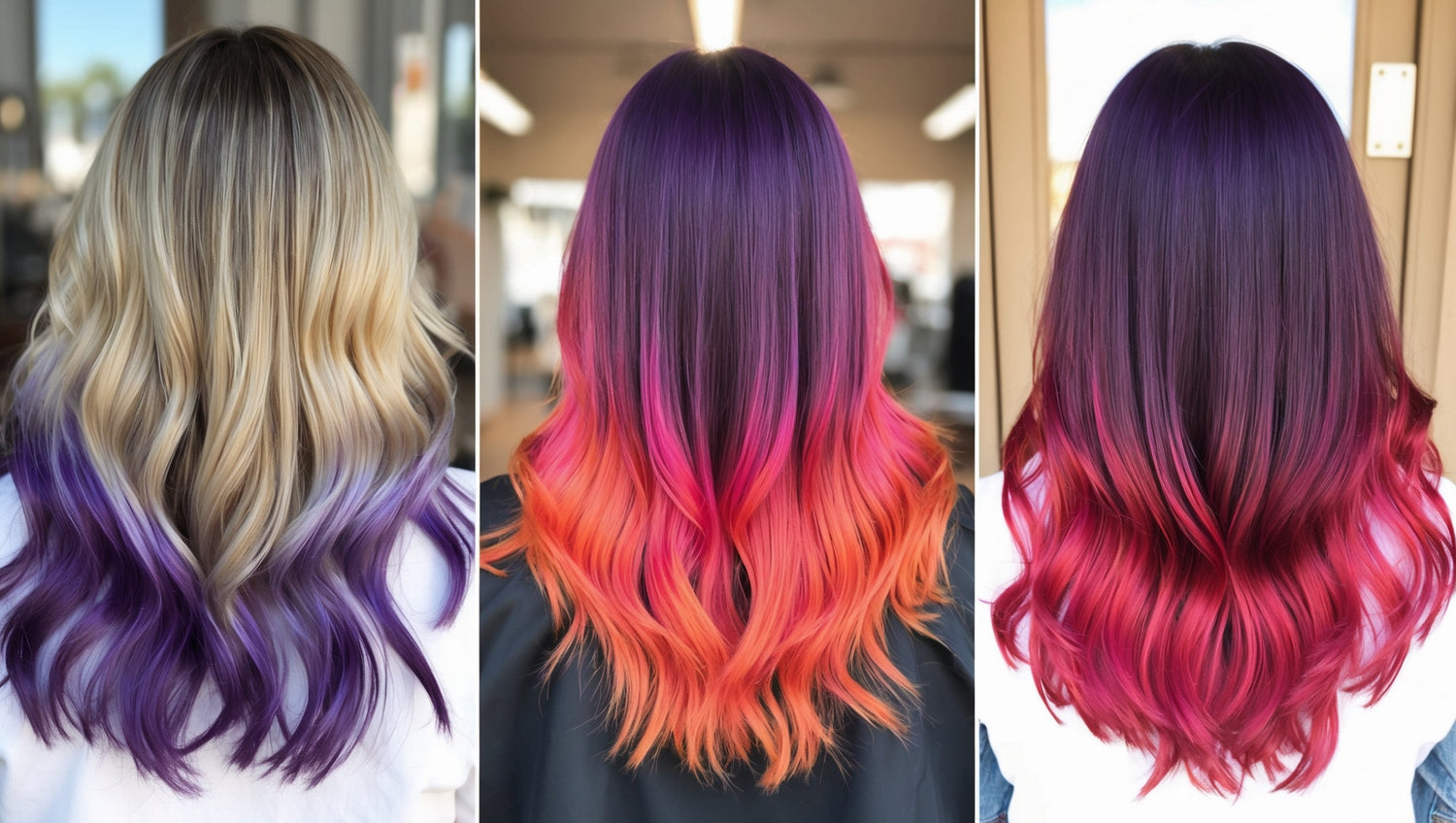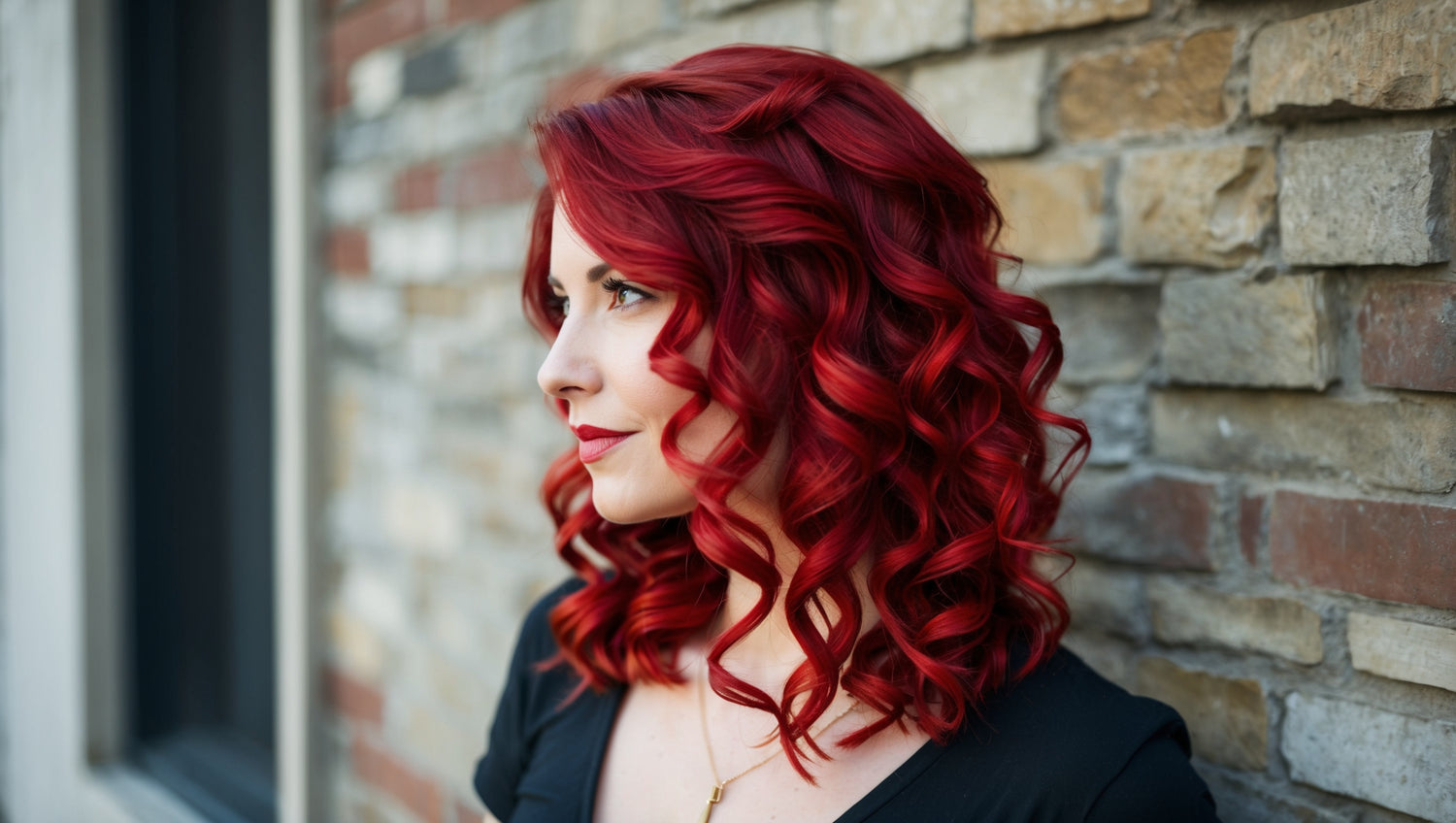Maybe you've heard the old saying: "Every 7 years, your hair and skin change." There's some truth in that, because our hair is renewed several times over the course of our lives. Have you ever wondered, when looking at old photos, why your hair looked completely different when you were a child than it does now? Was it curly and is it straight now? Did you have thick hair then and is it very fine now? Were you light blonde as a child and are you now dark blonde or brown-haired? We'll explain to you why your hair changes dramatically over the course of your life. And we've put together helpful tips and information so that you can give your hair exactly the attention and care it needs in the different phases.
HOW LONG DOES A HAIR LAST?
A hair cycle lasts 2 to 7 years. But not all of your hairs have the same growth cycle, so it's not like your hair disappears and changes every 7 years. There's more of a constant coming and going on your scalp.
Individual hairs grow and need the described period of 2 to 7 years. After that, they rest for a certain period and then fall out. This is completely normal and happens almost unnoticed. You can assume that between 100,000 and 150,000 hairs grow on your head. And each one is in one of the three phases described: growth, rest, fall out. The growth cycle is the longest phase, and 80 to 90 percent of your hair is in it at any one time. In this phase, the anagen phase, your body constantly supplies the hair root with all the nutrients it needs for strong growth.
After a short transition phase, the catagen phase, in which the hair follicle stops growing, there is a kind of rest period, the so-called telogen phase. The next new hair can grow back during this time. After two to four months, the old hair falls out and makes room for the new hair and its multi-year growth phase. This change takes place every day with 10 to 15 percent of your hair, so you lose 40 to 80 hairs every day.
DOES HAIR STRUCTURE CHANGE WITH AGE?
Yes, for various reasons. These can be hormonal, for example. A change in your diet can also lead to changes in your hair structure. Even a change in the care products you have been using can be such a reason.
WHY DOES HAIR SUDDENLY BECOME CURLY?
The main problem with frizzy hair is dryness. Although daily showering is part of the routine for most people, washing your hair every day is not a good idea, unless you have very oily hair, for example due to puberty or menopause. But other than that, you should not wash your hair more than twice a week, otherwise it will dry out and cause it to frizz.
In addition, frizzy hair (the so-called frizz effect) can also be caused by chemical treatments that are too strong and too frequent, too much sun or unsuitable care products. If your hair tends to frizz, we recommend Harmony Shampoo.

CAN FINE HAIR BECOME THICKER AGAIN?
Basically, hair structure is genetically determined, but if you rinse your hair with cold water after washing, it stimulates blood circulation in the scalp. This in turn ensures that the hair that grows back is healthy and strong. The right diet can also help. Hair needs proteins, zinc, iron, vitamins A, B and E and saturated fatty acids for fullness and volume. If you regularly include fish, fruit, tomatoes, broccoli, nuts and pulses in your diet, you will provide your hair with everything it needs. Spinach not only makes your muscles strong, but also your hair. Don't let the fact that Popeye is bald fool you.
AND WHAT ABOUT THE 7-YEAR CYCLE?
The old saying probably arose at some point from the duration of hair growth, which lasts 2 to 7 years. Each hair actually stays on your scalp for 2 to 7 years, so there is some truth in this popular saying. Experts in hair diseases and dermatology prefer to speak of three phases in a person's life in which hair can undergo possible changes. The first phase is puberty, when major hormonal changes take place and the body changes. The second phase is menopause, when the human body experiences another hormonal rollercoaster ride. During this phase, which lasts for different people, some physical processes are subject to sometimes major changes. Incidentally, men also go through menopause, albeit in a different form and with different effects than women. The experts refer to the third phase as a person's advanced age, more precisely the phase between the mid-sixties and early seventies. At this stage, most people's hair becomes very thin and hair loss increases.

TIPS FOR PERFECT HAIR CARE
During puberty or during menopause, when hormone levels fluctuate greatly, this is also reflected in the hair structure. The formation of male hormones, known as androgens, increases the production of sebum on the scalp. The result is greasy hair that sticks unattractively to the head and that cannot be styled into a trendy hairstyle. The best way to remedy this is with Balance Anti Oil Shampoo for greasy hair. 
The increased production of estrogens, i.e. female hormones, prevents sebum production. This can make your hair very dry and brittle. The right care would then be the Balance Eco Shampoo for sensitive and dry scalps.
Apart from these hormonal fluctuations, there are of course also the normal bad hair days. The hairstyle doesn't hold, the hair looks dull, the styling products don't do the job. You're probably familiar with these situations. They cost time and nerves and put you in a bad mood. That's why it's important to ensure healthy hair. The most expensive and high-quality care products are useless if your hair isn't healthy. So don't wash your hair too often, don't set the hairdryer too hot and massage your scalp to stimulate blood circulation! The result is healthy, strong and beautiful hair - not just every 7 years.






